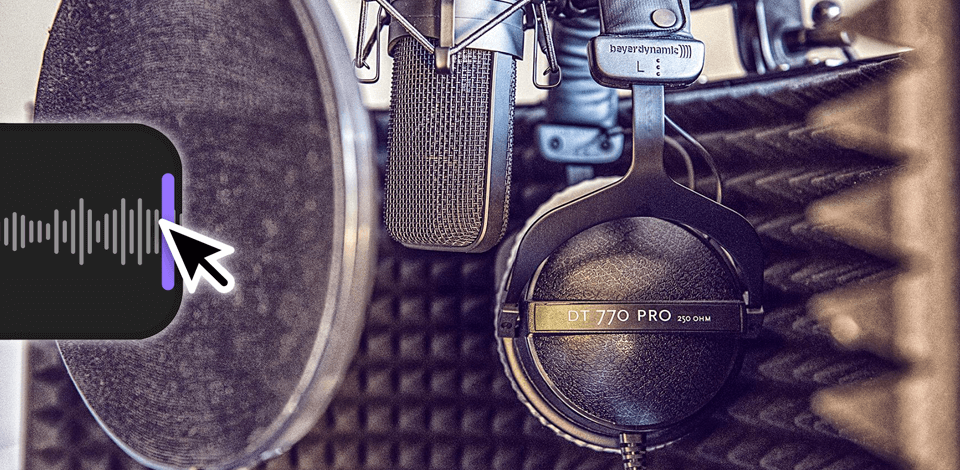
At FixThePhoto, we’ve had so many arguments about which headphones are best for video editing. Whether we’re working on wedding videos, business promos, or drone clips, we need good headphones to hear every tiny sound, like quiet background noise, the right music balance, or clear voiceovers.
Kate loves the Sony WH-1000XM4 headphones, while Tati prefers the beyerdynamic DT 990 PRO because of their open-back design. I’ve stuck with my Audio-Technica ATH-M50X for years, but some coworkers from FixThePhoto have complained they’re not very comfy and durable. So, we decided to test 50+ headphones for video editing to find the best ones.
We started by looking at highly recommended ones in different price ranges. We got ideas from other editors, Reddit threads, reviews on Amazon and B&H Photo, and YouTube experts. But in the end, we knew we had to try them ourselves to see which ones were really the best.
 ★★★★★ (5/5)
★★★★★ (5/5)
After testing lots of headphones, my team at FixThePhoto agrees that the Beyerdynamic DT 770 PRO are the best headphones for video editing. They sound clear, last a long time, feel comfy all day, and have impressive voice cancellation.
When we started testing headphones for video editing, we quickly learned that the right pair makes a big difference. It’s not just about hearing sound – it’s about catching every tiny detail, balancing the audio, and making sure the video sounds good on both phone speakers and studio monitors for video editing. Here’s what we found after hours of testing headphones:
Prioritize accuracy. The Sony MDR7506 were amazing because you could hear tiny details that would be missed with regular headphones, like a quiet buzzing in a voiceover or uneven footsteps in a sound effect. These are great for making sure everything sounds just right.
Comfort is important. Video editing takes hours, so comfy headphones are a must. After a 6-hour session with the RØDE NTH-100, I loved the soft memory foam ear cups. Lightweight headphones for editing video, like the Focal Listen Professional, are also great because they don’t tire your head.
Closed-back vs. open-back headphones. If you’re in a noisy place, like a busy office, the closed-back Beyerdynamic DT 770 PRO is great because the headphones block outside noise and keep the sound super clear. But if you’re in a quiet space, the open-back DT 990 PRO model makes the sound feel more natural, which is great for editing things like background sounds in a movie.
Wired headphones are usually better. We mostly use wired headphones for editing because they don’t have a delay in sound. But the wireless Sony WH-1000XM4 surprised us—the model had almost no lag and blocked noise really well, so it’s great for light editing or when you’re traveling.
Durability is a big plus. We’ve dropped the Audio-Technica ATH-M50X so many times, and they still work perfectly. If you need headphones that can survive rough use, make sure they’re built to last.
Amazon: 1K+ bought in past month
B&H: 10K+ sold in past year
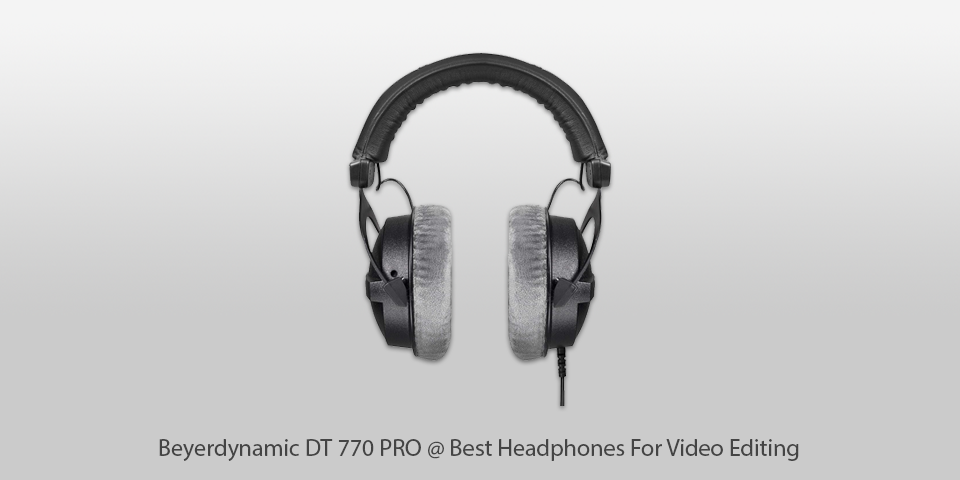
When we started testing the Beyerdynamic DT 770 PRO video editing headphones, it was clear they’re made for serious sound work. Their closed-back design blocks out noise really well, which is great for editing in our busy studio. Tati used them while working on a travel video and said they made her feel like she was standing in the middle of a rainforest because the sound was so real.
The headphones have a little extra bass, but it’s not too much. While editing a drone video with lots of action, I noticed the bass made explosions and engine sounds feel deeper, but the voices and other sounds stayed clear and sharp. Compared to the Audio-Technica ATH-M50X, these felt more “wow” for cinematic edits.
These headphones under 300 dollars are super comfortable, too. The soft ear pads are some of the best we’ve tested, and they don’t make your ears hot, even during long editing sessions. Kate, who’s picky about comfort, said, “I could wear these all day and not even notice them.”
However, they’re not great for travel since they’re bulky and don’t fold up. If you use the 250 Ohm version, they work best with an amp to get the best sound.
When to use them: For studio work, movies, sound design, adding realistic sound effects, editing on DaVinci Resolve or Pro Tools
Amazon: 2K+ bought in past month
B&H: 11K+ sold in past year
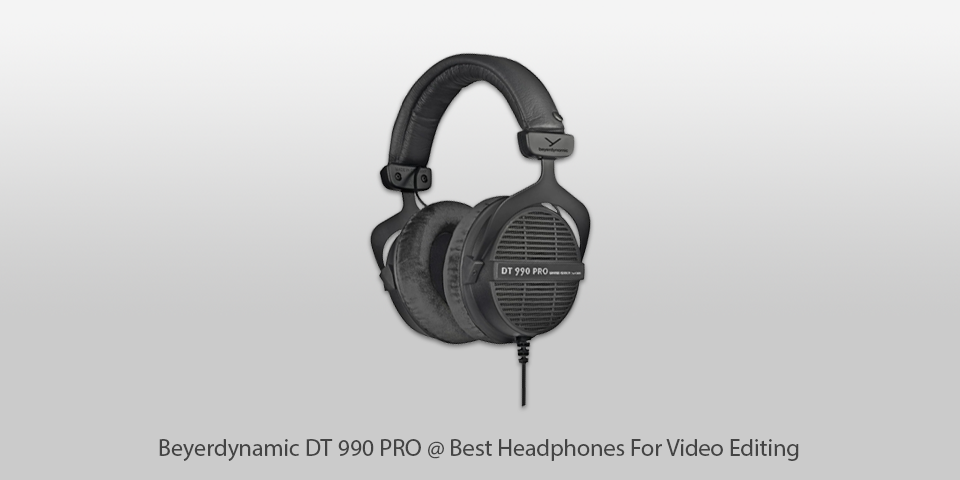
When we tested the Beyerdynamic DT 990 PRO, I wasn’t sure open-back headphones would work for video editing, but I loved them. Their wide, natural sound made it easy to work with different audio layers, like voices, music, and sound effects.
While editing a wedding video, I quickly cleaned up soft wind sounds during the vows without messing up the audio. Tati said it was really easy to balance music and voiceovers for a work project and liked how the DT 990 PRO didn’t have too much bass, unlike the bass-heavy Sony WH-1000XM4.
The soundstage is amazing with these headphones for music production. Someone on Amazon said, “It feels like you’re sitting in front of the band,” and I agree. Even Kate, who loves her Audio-Technica ATH-M50X, said these headphones made it easier to hear tiny background noises, like traffic in drone videos.
The comfort is incredible. The soft velour ear pads stayed cool and comfy during long editing sessions, unlike the tighter Sennheiser HD 280 Pro, which Tati said felt like a “head vice.” However, at 250 Ohm, these headphones for video editing need an amp to sound their best. When I used them with a Focusrite Scarlett 2i2, they were amazing.
When to use them: In quiet places where you don’t need noise isolation
Amazon: 10K+ bought in past month
Adorama: 14K+ sold in past year
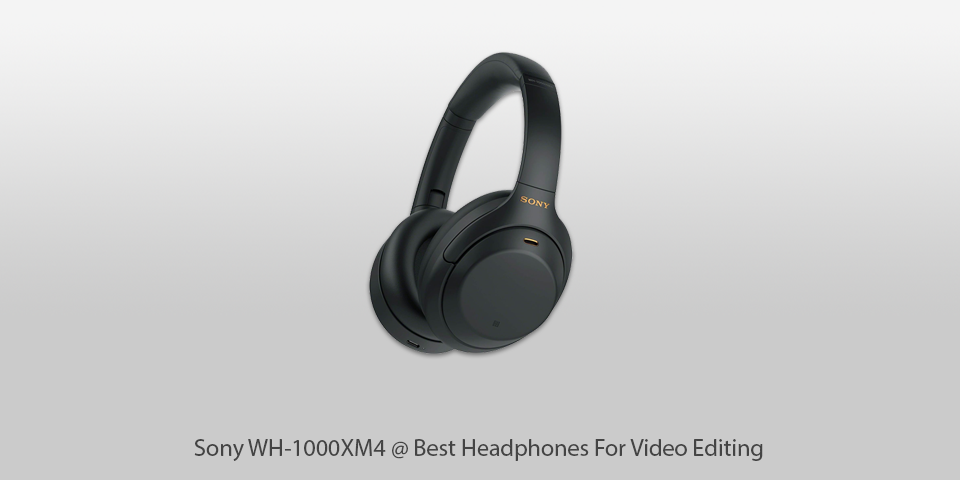
Testing the Sony WH-1000XM4 headphones felt very different from using the open-back models. These noise cancelling headphones under 200 dollars are perfect for editing in our busy office. Kate used them to edit a travel vlog with lots of audio layers and loved how the noise canceling helped her focus without any distractions.
The sound has a lot of bass, which is great for music but not the best for fixing dialogue. While editing a documentary, I had to double-check some sound adjustments on studio speakers to make sure the voices and higher tones were right. Still, the WH-1000XM4 did a good job with detailed sounds, especially in scenes that shift from quiet interviews to action-packed moments.
We liked the touch controls on these headphones. Tati easily changed the volume and paused the audio while working on a fast corporate project. The Bluetooth worked perfectly, and it was super easy to connect the headphones to MacBook Pro for editing with DaVinci Resolve.
They’re lightweight and have good padding, so they’re comfy, but not as cool and breathable as the soft velour pads on the DT 990 PRO. After long sessions, my ears felt a little warm, but it wasn’t too bad.
When to use them: For editing in noisy places or traveling, like for vlogs or projects on the go
Amazon: 5K+ bought in past month
B&H: 28K+ bought in past month
Adorama: 11K+ sold in past year
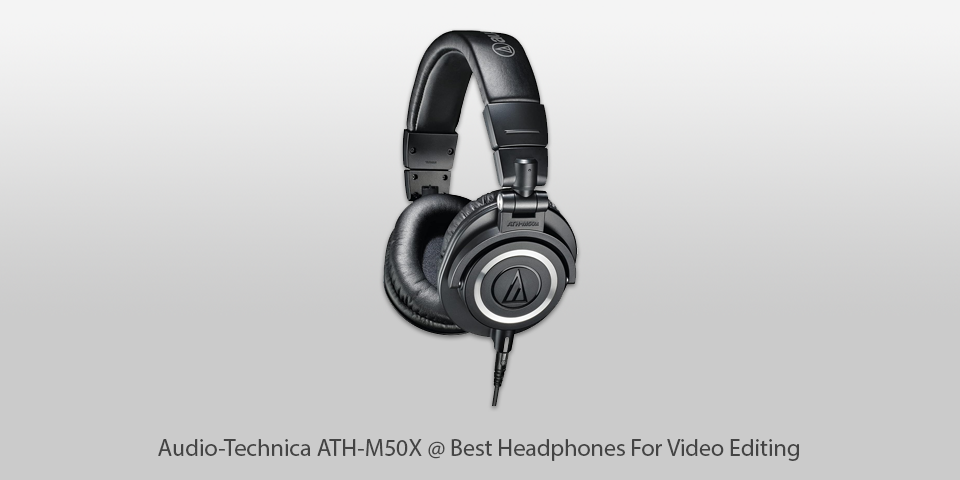
These headphones are super popular because they have a balanced sound that is perfect for video editing. The clear mids and highs helped me clean up dialogue in a love story video, where every soft word needed to be perfect. Kate usually works on videos with lots of sound and she said these headphones showed her exactly what the audience would hear.
The bass is nice and tight but not too heavy, which helped Tati fix the background music in a wedding video. Compared to the Sony WH-1000XM4, these ones gives a more even sound, making them better for serious audio editing. They’re comfortable, but after a long time, the ear cups can feel a bit tight. However, they fold up easily, which makes them great for traveling.
Even though these headphones for video editing don’t have active noise canceling like, for example, the WH-1000XM4, they block out enough noise with their snug fit. I edited an outdoor drone video and didn’t get distracted by the noise around me at all.
When to use them: For detailed audio editing on software like Adobe Audition or Final Cut Pro in quiet places or studios. They’re perfect headphones for podcasting, dialogue-heavy videos, or music videos.
Amazon: 200+ bought in past month
B&H: 2K+ bought in past month
Adorama: 1K+ sold in past year
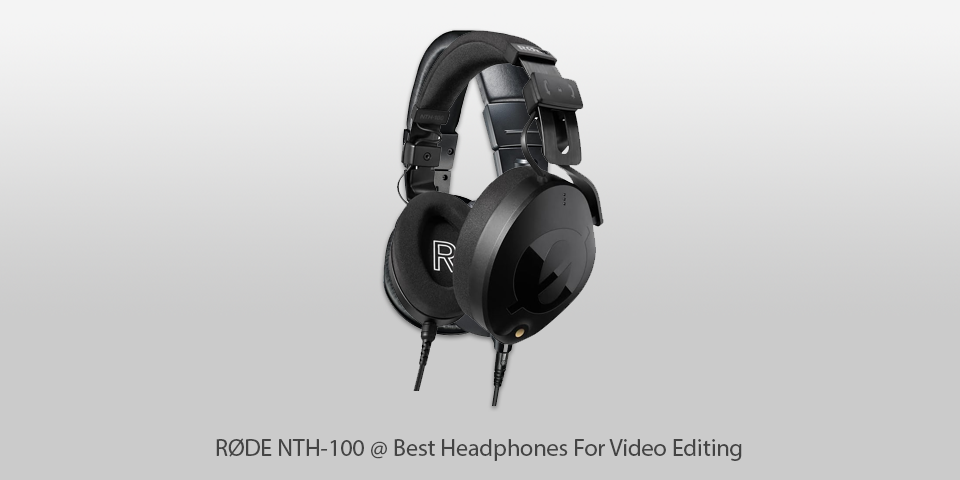
These headphones under 200 dollars were made for content creators. Right away, we noticed how clear and balanced the sound was – perfect for video editing, where you need to hear every detail.
Kate used them to edit a short film with lots of sound layers and said, “These headphones are like a microscope for audio.” Dialogue, music, and background sounds all sounded clear, making it easy to adjust levels without making mistakes.
The ear cups are made of soft memory foam and covered in Alcantara fabric, which felt super comfortable during long editing sessions. The headband is adjustable, so it fits perfectly and stays in place while editing. Compared to the beyerdynamic DT 770 PRO, the NTH-100 video editing headphones felt more modern in both look and comfort.
I tested the NTH-100 while editing a corporate video. The sound of voices was really clear, which made cleaning up the voiceovers easy. The sound had a little warmth to it, which helped add depth to the background music without messing up the mix. One review I read said, “These headphones make everything sound like it was meant to be heard in a studio,” and I agree.
Even though they’re not wireless, the cable can be detached, which is great when I’m working on the go. They feel strong and well-built like they’ll last a long time.
When to use them: The RØDE NTH-100 are great cable headphones for editing videos that have a lot of talking, like documentaries or corporate videos, where clear voices are really important. They work well with editing software like Adobe Premiere Pro or Audition.
Amazon: 1K+ bought in past month
B&H: 9K+ bought in past month
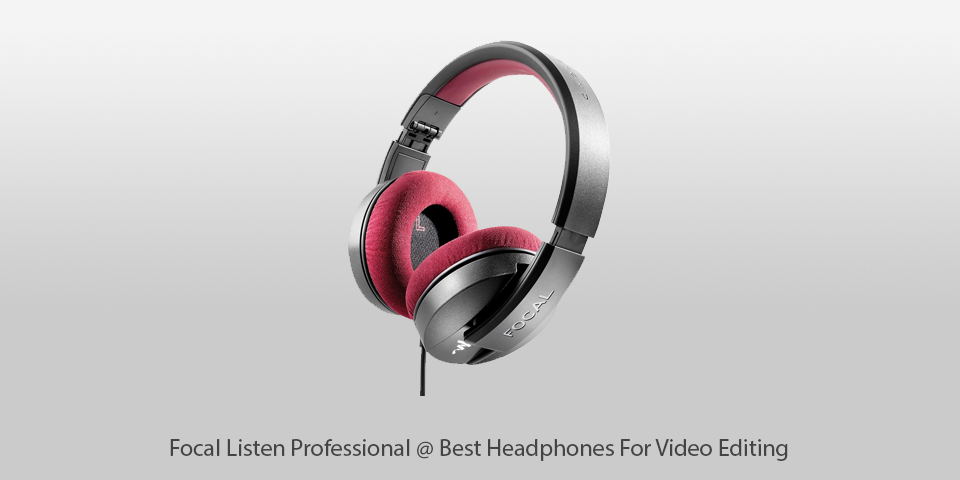
When we tried the Focal Listen Professional headphones, they felt like the best of the best – smooth, precise, and made for serious work. As soon as I put them on, they fit perfectly, and the memory foam ear cups blocked out a lot of outside noise. The design looked super professional, but the sound was what really impressed me – it was balanced, rich, and full of details.
I tested these headphones for editing a wedding video, where I needed to hear tiny sounds like background chatter and soft piano music. The Focal Listen Professional gave me a wide, detailed sound that was perfect for closed-back headphones. I could easily separate the sounds and adjust them, which made balancing the audio easier.
Kate used them to edit a fast-paced sports video with loud music and voiceovers. She said the headphones picked up every little detail, like each drumbeat or guitar note, making everything sound super clear and sharp. She said the Focals gave her a “no compromise” experience, where all the sounds were clear but not too strong or changed.
One surprise was how light they felt even though they were well-made. After hours of editing, I didn’t feel tired from the headband like I do with some other headphones. However, the shiny finish on the ear cups did get smudged with fingerprints, which made them look less nice over time.
When to use them: For editing movies, commercials, or music videos with Focusrite Scarlett 2i2 or Apollo Twin
Amazon: 2K+ bought in past month
B&H: 11K+ bought in past month
Adorama: 8K+ sold in past year
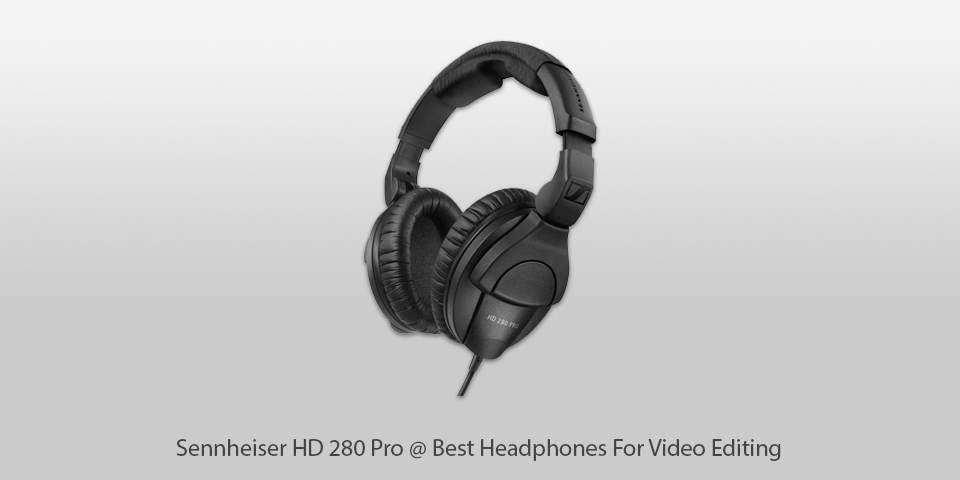
The Sennheiser HD 280 Pro video editing headphones are simple but good at what they do. They feel strong and built to last, even though they don’t look super premium. The ear cups can fold flat, so they’re easy to pack in a bag if you need to take them somewhere.
I tried them while editing a vlog. The headphones did a great job blocking out noise, so I could focus on the sound without being distracted by the noise around me. The bass sounded clear but not too strong, and the voices were super easy to hear, which helped a lot when working on dialogue.
That said, they don’t make tiny sounds in the higher tones as clear as some other headphones, like the RØDE NTH-100. This wasn’t a huge problem for most of my work, but if you need to hear every little detail in the sound, they might not be the best. Kate said these would be great as a backup pair or for beginners on a budget.
One downside is that they squeeze your head pretty tightly. This helps block noise, but it can get uncomfortable if you wear them for a long time, so I don’t think these would be comfortable headphones for large heads. After two hours, I kept moving them around to feel better.
When to use them: In noisy places for basic audio work, like fixing dialogue or balancing music, especially for videos like vlogs, tutorials, or work projects in DaVinci Resolve or Premiere Pro
Amazon: 8K+ bought in past month
B&H: 90K+ bought in past month
Adorama: 74K+ sold in past year
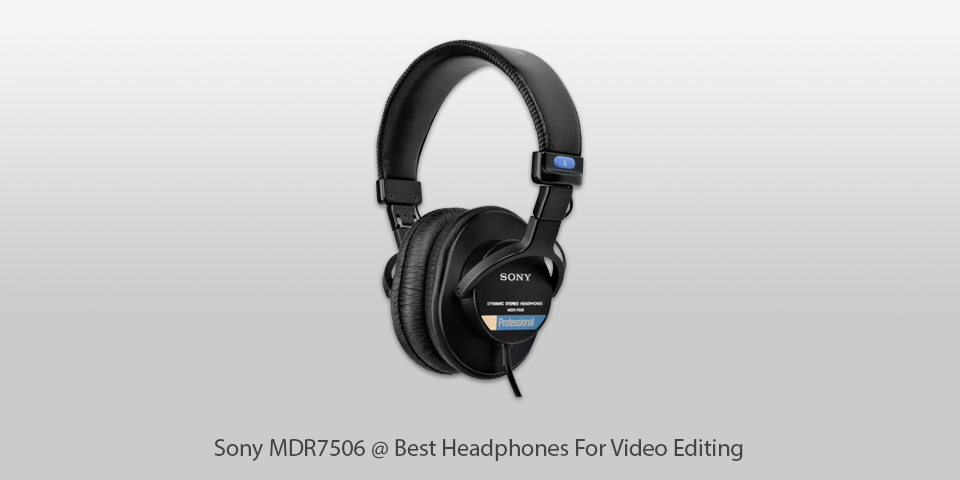
I used these headphones for video editing to work on a documentary where I had to mix interviews, background sounds, and soft music, and they sounded amazing. The voices were super clear, and I could even hear tiny background noises I needed to fix. Their frequency response is quite flat, which helped me catch mistakes.
Kate used them for a travel vlog. She liked how they helped him layer voiceovers with the background music. The headphones are super detailed, so they made it easy to check if all the audio parts worked well together. But if the audio is messy, these headphones will make it obvious.
One thing I didn’t expect was how they felt after wearing them for a long time. Even though they’re light, the ear pads were kind of hard, and after a few hours, they started to hurt a bit. Also, the coiled cord helped me stay neat in one spot but got in the way when I tried to move around.
When to use them: For fixing audio in video editing software for Windows or Mac like Audition or Pro Tools in quiet places
Amazon: 10K+ bought in past month
OneOdio: 100K+ bought in past month
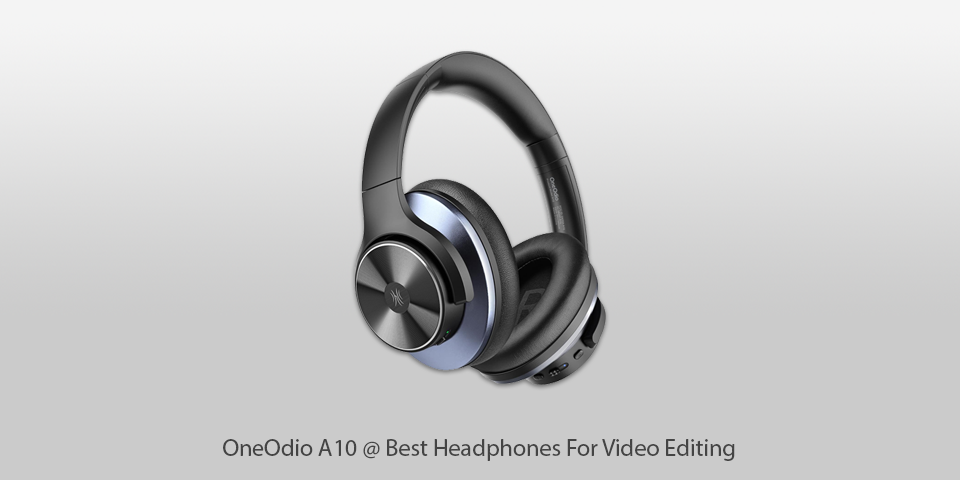
OneOdio A10 are budget-friendly noise-canceling headphones, so I wondered if they could compete with the better ones we tested. They weren’t bad, but they weren’t amazing either. I tried the A10s for editing a fun, short social media video.
The noise-canceling worked pretty well, blocking out most of the background noise in our office. The bass was strong and made the music sound exciting, but it was a bit too much when I needed to focus on the dialogue. Compared to the Sony MDR7506, these headphones didn’t sound as clear or balanced in the middle and higher tones.
Kate used them to work on a wedding video where she had to mix emotional music with the vows and background sounds. She liked the noise-canceling but said it sometimes made her ears feel weird, like a slight “pressure,” which got annoying after a while.
For comfort, the A10s are light, and the ear cups are soft enough for a few hours. But Tati mentioned that the headphones for video editing don’t feel as strong or well-made as more expensive ones, like the RØDE NTH-100. One review on Amazon said it best: “They’re great for the price, but you get what you pay for.”
When to use: For beginners or simple projects, like YouTube videos or vlogs made with Filmora or iMovie. They’re also easy to carry, so they’re great headphones for movies or as a backup for editing on the go.
As video editors, we spend hours working on sound, matching it perfectly with videos, and making sure everything is just right. Picking good headphones for editing videos isn’t just about great sound; it’s also about headphones for ear health, staying comfortable during long hours, hearing sound accurately, and having headphones that won’t break easily.
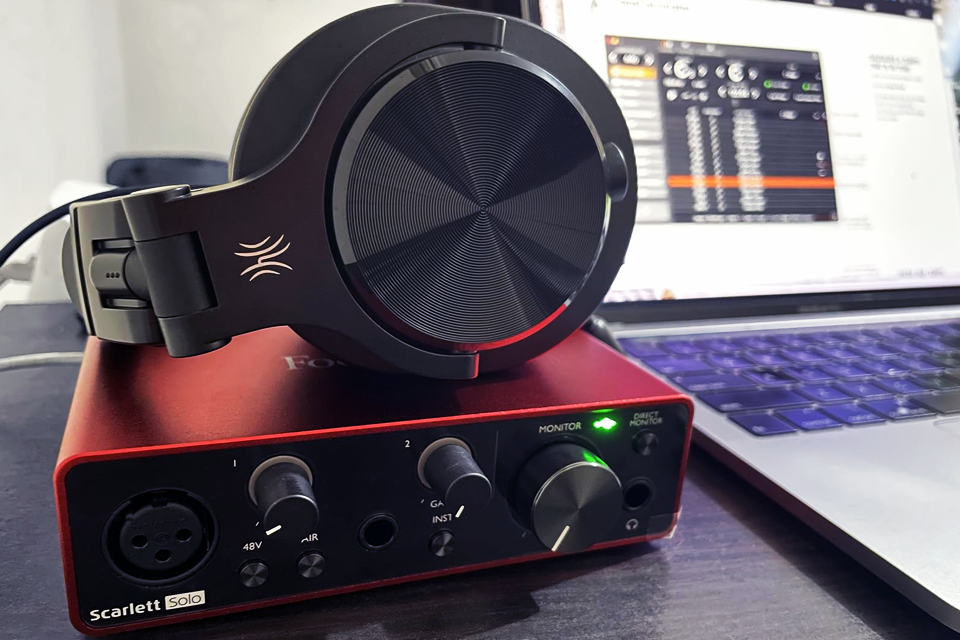
To find the best headphones, we tested each pair while editing some videos. No fancy sound labs, just real projects like syncing wedding vows or balancing audio for a drone video. We used each pair for at least two full editing sessions. Here’s what we looked at:
It’s always cool to see which headphones the professionals use for their big projects. Some of the ones I tested with my FixThePhoto teammates are trusted by people who work on amazing movies. Here are two models that stand out and are used by professional studios:
Beyerdynamic DT 770 PRO. These headphones for filmmakers were used by E.J. Holowicki, a sound designer for Pixar while working on Brave. They’re known for being super clear and blocking out noise well. They’re perfect for hearing every little detail and making sure everything sounds just right.
Audio-Technica ATH-M50X. These were used by Peter Cullen, the famous voice of Optimus Prime when he recorded for Transformers 4. They have balanced sound and are tough, which makes them great for voice work and editing sound in movies.
If these headphones are good enough for Pixar movies or Transformers, you know they’re built to do an amazing job.
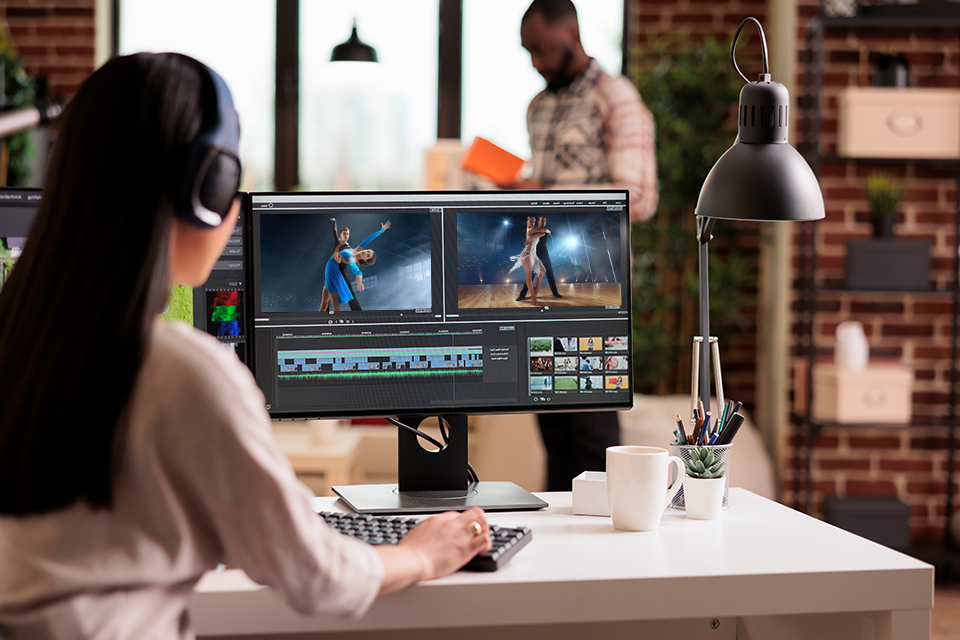
When you get new headphones, the first thing you should do is try them out with your favorite songs, movies, or trailers. This helps you get used to how they sound and notice details you might have missed before. You might even spot flaws in some recordings or realize how much better things sound with good headphones.
I like testing new headphones for editors with movie soundtracks. For example, Hans Zimmer’s music in Interstellar is awesome for checking how well headphones handle both quiet sounds and loud parts.
Another great one is the Inception soundtrack. When I used the Sony MDR-7506 and the Beyerdynamic DT 770 PRO, I noticed details I had never heard before, even though I’d listened to those tracks so many times.
For spoken-word audio, I listen to well-made podcasts or movie scenes with a lot of talking. This helps me see how clear the voices sound, which is super important for editing interviews or voiceovers. A great example is the opening interrogation scene from The Dark Knight. It has a mix of background noise and clear talking that can show how good your headphones really are.